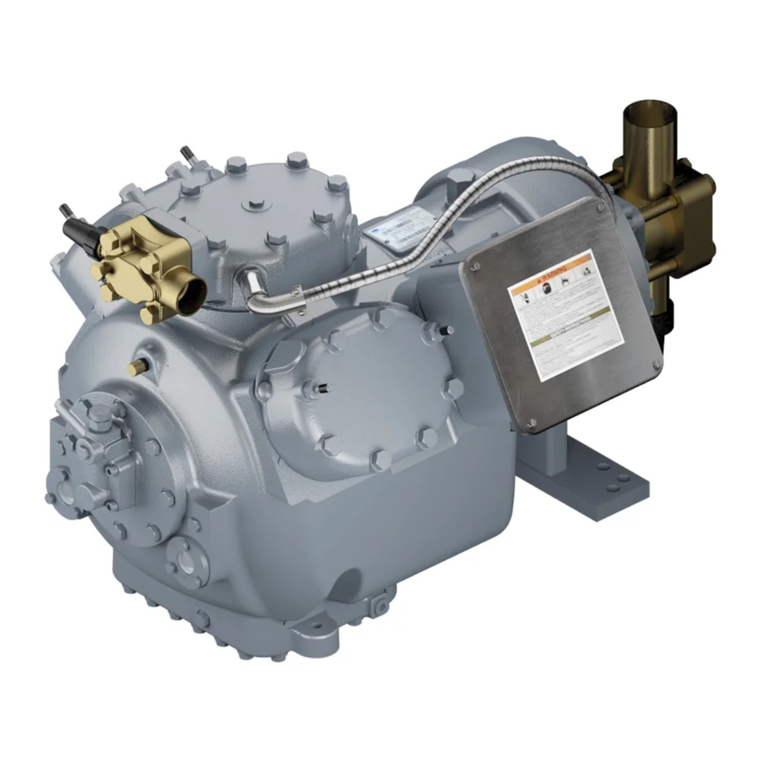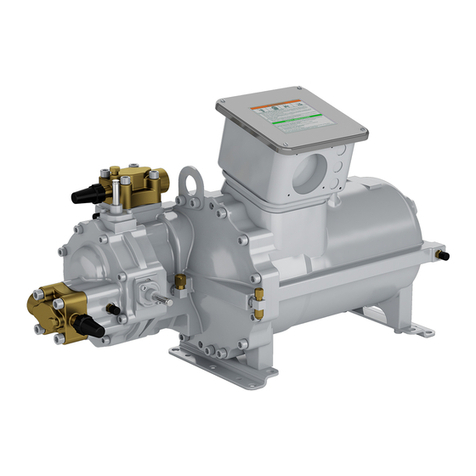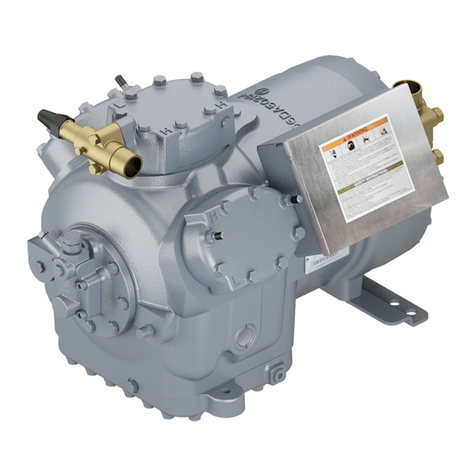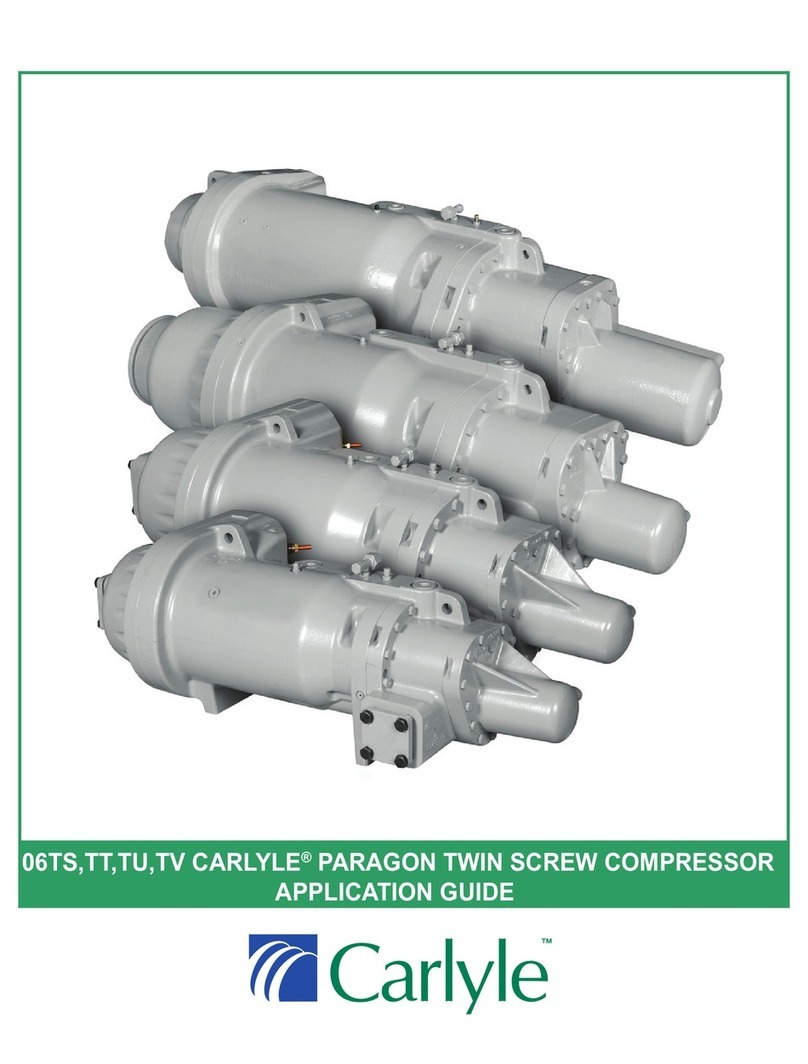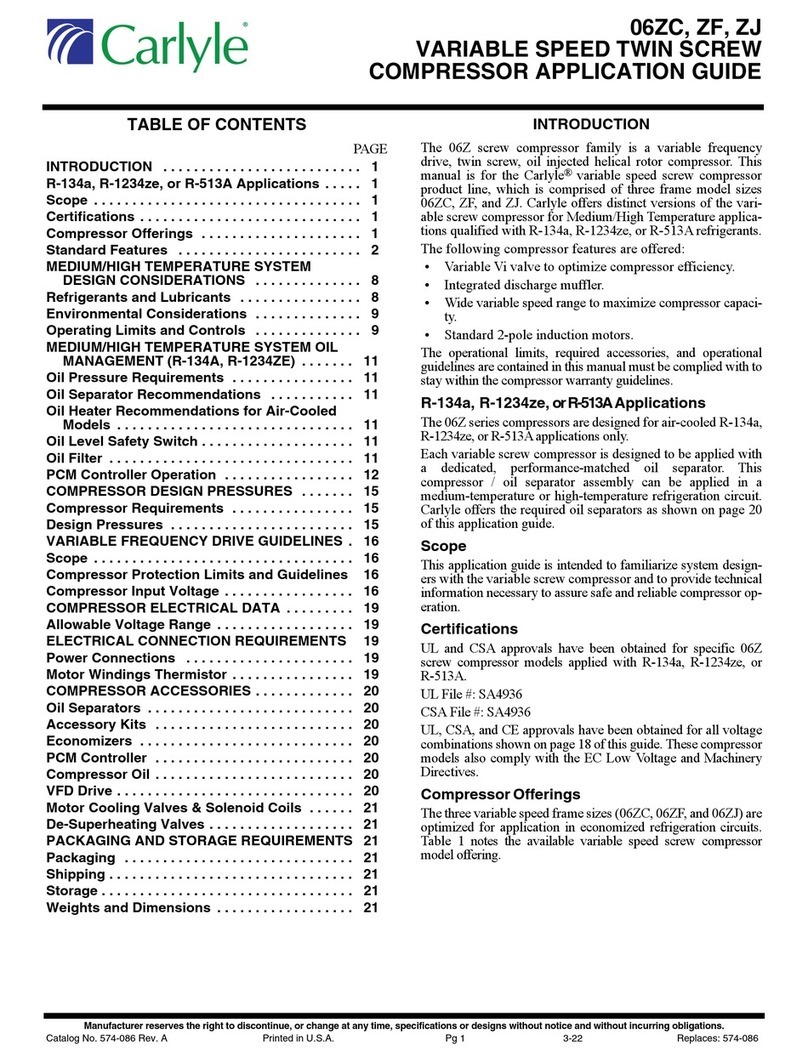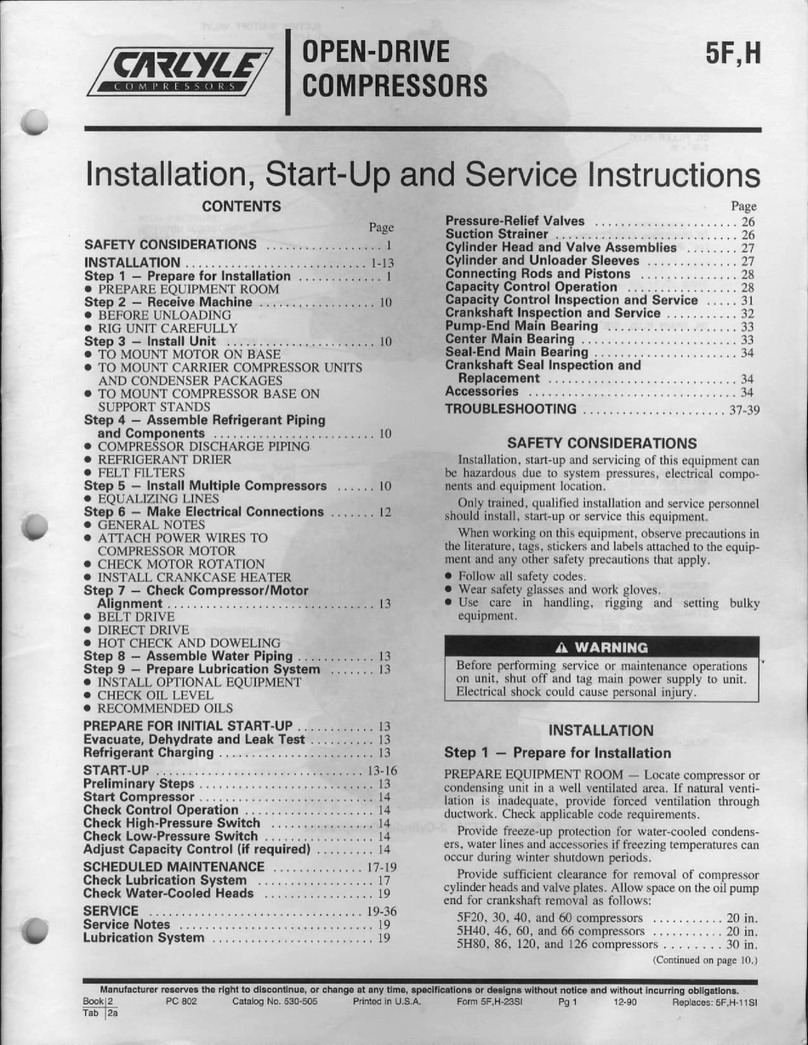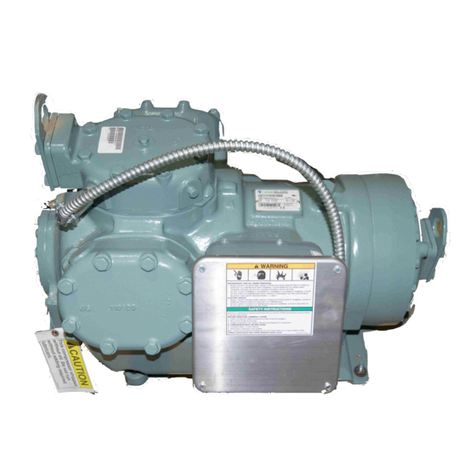
Introduction
Features and Benefits . . . . . . . . . . . . . . . . . . . . . . 3
How Compound Cooling Works . . . . . . . . . . . . . . . 3
Obsolete Compressors . . . . . . . . . . . . . . . . . . . . . 3
06CC Model Number Significance . . . . . . . . . . . . . 5
Compressor Physical Dimensions . . . . . . . . . . . 6-8
06CC Compressor (16 to 37 cfm) . . . . . . . . . . . . . 9
06CC Compressor (50 to 99 cfm) . . . . . . . . . . . . 10
1.0 System Design Considerations
1.1 Performance Data . . . . . . . . . . . . . . . . . . 11-13
1.2 Physical Data . . . . . . . . . . . . . . . . . . . . . . . . . 14
1.3 Agency Approvals . . . . . . . . . . . . . . . . . . . . . 15
1.4 Circuit Breaker Selection Table . . . . . . . . . . . 15
1.5 Refrigerants . . . . . . . . . . . . . . . . . . . . . . . . . . 16
1.6 Electrical Data Table . . . . . . . . . . . . . . . . . . . 16
1.7 Subcoolers . . . . . . . . . . . . . . . . . . . . . . . . . . . 17
1.8 Subcooler Selection . . . . . . . . . . . . . . . . . . . . 17
1.9 Subcooling Correction . . . . . . . . . . . . . . . . . . 19
1.10 Subcooler Load . . . . . . . . . . . . . . . . . . . . . . 19
1.11 Discharge Pressure Limits . . . . . . . . . . . . . . 19
1.12 Compressor Discharge Pressure Control . . 19
1.13 Variation in Capacity and Power . . . . . . . . . 19
1.14 Superheat Correction. . . . . . . . . . . . . . . . . . 19
1.15 Suction Line Accumulators. . . . . . . . . . . . . . 20
1.16 Single Compressors and Multiple Compressor
System . . . . . . . . . . . . . . . . . . . . . . . . . . . . . 20
1.17 Control Scheme . . . . . . . . . . . . . . . . . . . . . . 20
1.18 De-Superheating Expansion Valves. . . . . . . 20
1.19 Interstage Check Valves . . . . . . . . . . . . . . . 20
1.20 Capacity Control . . . . . . . . . . . . . . . . . . . . . 20
1.21 Low-Stage Discharge Gas Temperatures . . 20
1.22 Cylinder Head Cooling Fans . . . . . . . . . . . . 20
1.23 External De-Superheating . . . . . . . . . . . . . . 20
2.0 Compressor Lubrication System
2.1 Oil Separator and Oil Return . . . . . . . . . . . . .21
2.2 Oil Equalization. . . . . . . . . . . . . . . . . . . . . . . .21
2.3 Oil Pressure Safety Switch . . . . . . . . . . . . . . .21
2.4 Oil . . . . . . . . . . . . . . . . . . . . . . . . . . . . . . . . . .21
3.0 Refrigerant Control
3.1 Suction and Interstage Piping. . . . . . . . . . . . .22
3.2 Suction Line Sizing . . . . . . . . . . . . . . . . . . . . .23
3.3 Suction Pressure Range. . . . . . . . . . . . . . . . .23
3.4 Intermediate Pressure Range. . . . . . . . . . . . .23
3.5 Discharge Pressure Range. . . . . . . . . . . . . . .23
3.6 High-Low Pressure Switches . . . . . . . . . . . . .24
4.0 Compressor Features
4.1 Overtemperature Protection . . . . . . . . . . . . . .25
4.2 Overcurrent Protection . . . . . . . . . . . . . . . . . .25
4.3 Internal Pressure Relief Valves. . . . . . . . . . . .25
5.0 Compressor Wiring
Typical 06CC 16 to 37 cfm
Installation Wiring . . . . . . . . . . . . . . . . . . . . . . . . .26
Typical 06CC 50 to 99 cfm
Installation Wiring . . . . . . . . . . . . . . . . . . . . . . . . .27
6.0 Compressor Accessories. . . . .28-30
Appendix . . . . . . . . . . . . . . . . . . . . . . . . . . . . . . 31
Contents
